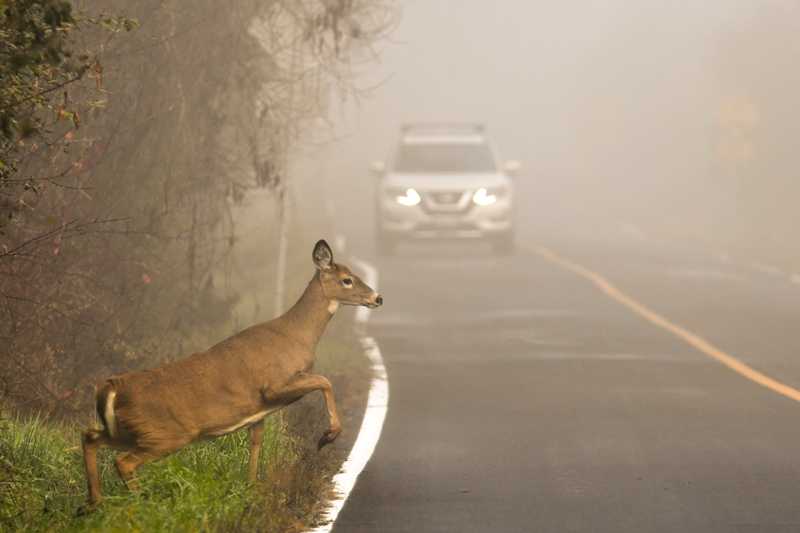Another summer is coming to an end and another autumn is on its way. While the new season does offer its charms – the changing leaves, cozy sweaters, and pumpkin spice – it brings with it some unique driving challenges.
The late fall months of November and December see an increase in auto collisions. From changing weather to wildlife habits, here are five fall driving challenges and our advice to safely navigate them.
Reduced road visibility
The challenge: With the end of daylight-saving time in some provinces on the first Sunday of November, darkness will fall earlier in the evening. Also, autumn is the foggiest season of the year (The Weather Network explains why) which can make driving riskier, especially in the early morning hours.
Our advice:It’s a good time to make sure your headlights and taillights are in good condition. Keep your windshield clean with regular car washes or use the window squeegee whenever you’re at the pump. Use fog lights if you have them and resist the temptation to use your high beams; they can reflect off water droplets in the air and actually reduce visibility.
Dangers of leaves on the road
The challenge: One of fall’s most beautiful attributes can pose one of the biggest challenges to drivers; falling leaves combined with wet roads can create slippery conditions. They can also cover important road markings, including lane divisions and crosswalks.
Our advice: Simple enough – reduce your speed and be extra cautious when driving. Be sure to remove any fallen leaves from your windshield and back window to ensure nothing is obstructing your view.
Changing temperatures
The challenge: Sudden or unexpected drops in temperature can create dangerous roads for unwitting drivers. Flurries and frost can pose risks if you’re not prepared for them, plus fall is also prime-time for black ice.
Our advice: Check local weather reports frequently for changing conditions. You can stay safe by reducing your speed, leaving more space between you and other vehicles, and braking gently. Maintain your tire tread and grip on the road by rotating your tires every six months or 10,000 to 13,000 kilometers. Finally, be extra cautious on bends in the road.
Increased wildlife activity
The challenge: One of the greatest joys of living in Canada is the access to pristine wilderness, and with it comes plenty of wildlife activity, from raccoons and skunks to deer and moose. As many animals prepare for winter hibernation, they will be on the hunt for food sources and will often cross roadways to find them. Other animals, including deer, will be looking for mates. Auto collisions also harm populations of Canadian wildlife which are already facing declining numbers.
Our advice: Pay particular attention when driving through heavily wooded areas, and from dusk until early morning when nocturnal animals are still out and about and visibility is reduced. Stick to the speed limits and avoid driving distraction.
Prepare your vehicle for fall
The challenge: Each new season means changing conditions on the road – and autumn is no different. But a new season also means a new opportunity to do some automobile maintenance. What should be on your list?
Our advice: Here’s a helpful checklist to get ready for autumn driving that you or a trusted mechanic can look at:
- Check your headlights and taillights to make sure they’re all in working order
- Test and check your brakes, and replace pads if needed
- Inspect and rotate tires
- Ensure your defrosters are in working condition
- Check fluids including windshield washer fluid
- Add an emergency kit to your car or replenish any existing ones
Fall is a great season for a colourful road trip anywhere from coast to coast. With proper planning and road smarts, you can safely navigate the challenges that come with the season. Enjoy!




